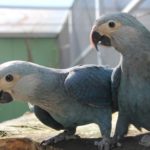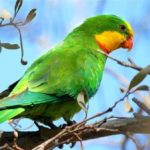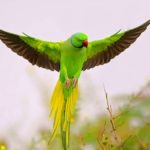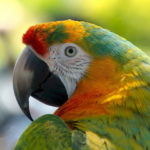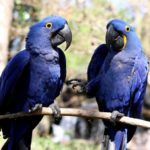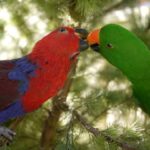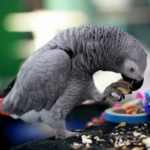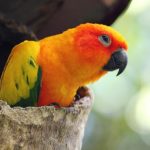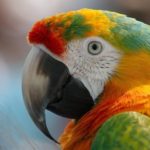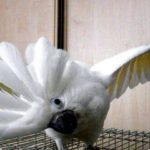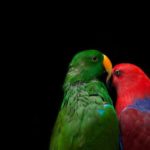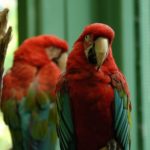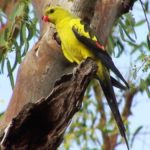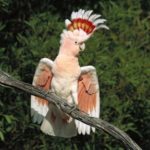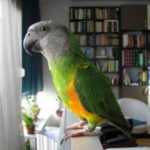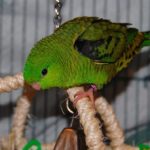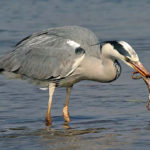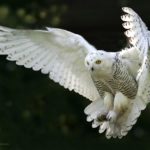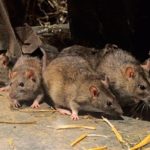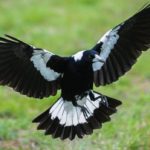Parrots – information
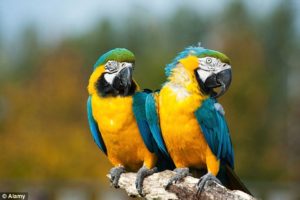 All parrots are schooling birds, but in different species the flocks may differ in size and permanence. Thus, large species nest in separate pairs, and in flocks gather only during the out-of-breeding period, other species form permanent flocks and colonial nests.
All parrots are schooling birds, but in different species the flocks may differ in size and permanence. Thus, large species nest in separate pairs, and in flocks gather only during the out-of-breeding period, other species form permanent flocks and colonial nests.
Nests of parrots are always located on trees or plants that replace them (for example, huge cacti). The only kind of parrots that nests on the ground is the owl parrot. This is due to the fact that the owl parrot is the only flightless species in the detachment, these birds live in burrows.
The nests themselves may look different. Most parrots prefer to nest in hollows, the benefit of a powerful beak helps them to equip such a dwelling, but some species can arrange nests from twigs. For example, parrots of kalit arrange collective nests, up to 3 m in diameter! This nest consists of separate nesting chambers, original apartments. Parrots are sedentary birds. They have lived on the same forest for years and only species inhabiting the arid regions of Australia can make short migrations in search of food and water. For this reason parrots though are capable to a fast flight, but are not hardy.
Due to the pronounced social nature of life, the parrots developed a high intellect. Numerous studies have established that parrots not only learn and remember commands quickly, but also have analytical thinking. According to the level of logic, parrots divide the palm of superiority among birds along with crows, but on the ability to communicate far surpass not only birds, but also many mammals.
For contacts with each other, they use a rich language of sounds and body movements. The voice of the parrots is loud, sharp, there is always a noise in their pack. It is characteristic that parrots use not only their own sounds for communication, but also borrowed from the environment. The ability for onomatopoeia in different species is different: some parrots rarely include in their speech extraneous sounds (cockade, ara), others use them constantly (Jaco).
However, the main feature of parrots is that they not only repeat heard sounds (as do, for example, many songbirds), but give them meaning. That is, parrots use certain sounds to indicate certain situations and objects. In other words, these birds practice this speech! For example, the captive parrot zhako not only learned the names of more than a hundred subjects, but also learned to express requests like “I want – I do not want this”, was able to make comparisons such as “this subject is more than that” and even expressed the absence of an object. That is, the bird has mastered abstract concepts, and in fact it used to be believed that abstract thinking is inherent only in man! For such training, Jaco took 15 years.

